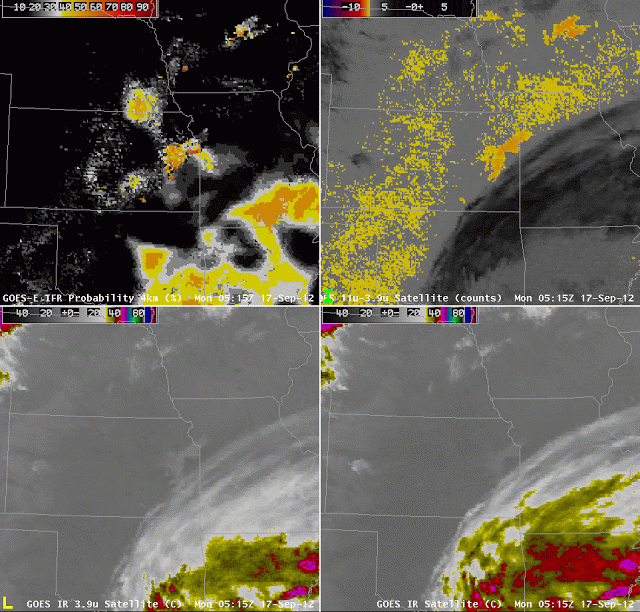Stray light occasionally intrudes into the 3.9 µm channel, and that has a big impact on both the brightness temperature difference and therefore on the GOES-R IFR product. The stray light impact on the 3.9 µm channel is evident at 0531UTC — it does not impact the 10.7 µm channel. The big impact on the brightness temperature difference translates to a big signal in the GOES-R IFR probabilities. Note how GOES-R IFR probabilities do not change underneath the high-level cirrus over eastern OK, southern MO and Arkansas: GOES-R IFR probabilities do not use satellite data in regions of multiple cloud layers, or in regions of ice clouds.
Stray Light in the GOES-R IFR Fog Product
Leave a reply

